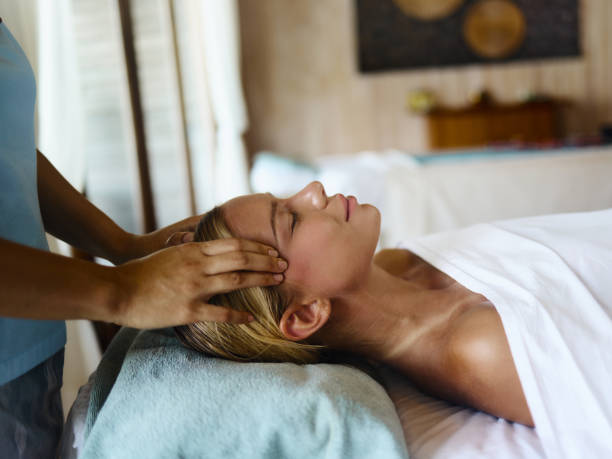Unlocking Peak Performance: The Impact of Sports Massage on Athletes’ Bodies and Minds
Massages for athletes promote flexibility, decrease fatigue and improve energy levels for optimal performance. They also aid injury prevention by addressing muscle imbalances and reducing tightness and tension.
Evaluate the athlete’s training goals and performance needs when choosing techniques. Pre-event sessions should focus on warming up the muscles and increasing circulation, while post-event sessions help to reduce lactic acid buildup and facilitate muscle recovery.
Benefits
Whether an athlete is an elite professional or a weekend warrior, sports massage enhances athletic longevity by correcting imbalances and preventing injuries. Getting a regular sports massage before and after workouts helps loosen up tight muscles, thus avoiding strains and sprains that keep athletes off the field.
Another benefit is increased flexibility. By lengthening muscle fibers and breaking down scar tissue, sports massage increases an athlete’s range of motion and enables them to move with greater agility and precision.
Increased flexibility also reduces the risk of injury, allowing an athlete to train harder and achieve a higher level of performance.
Athletes can also benefit from the psychological effect of sports massage. The relaxation achieved by a massage triggers the parasympathetic nervous system and encourages focus, which is vital for high-level performance.
Before an event, athletes should try to schedule a massage that addresses major muscle groups and mimics the movements they will be making in their sport or training session. In addition, it is best to avoid using techniques that may be too aggressive or increase the risk of an adverse reaction. It is also important to stay in communication with the therapist regarding comfort levels and pressure.
Injury Prevention
Sports massage helps prepare the body for physical exertion, as well as alleviates the stress of overexertion. This reduces the risk of injury and improves athletic performance. It is also a key element in the recovery process, speeding up the time to return to optimal performance levels.
Pre-Event Massage
The rhythmic pressure and strokes of a sport massage stimulate the release of endorphins, our bodies’ natural stress relievers. This can lead to a reduction in the production of cortisol, which helps prevent fatigue and aids mental clarity.
Post-Event Massage
Intense exercise and repetitive motions can result in a buildup of lactic acid, which causes muscle soreness. Massage accelerates the breakdown of these toxins, relieving pain and increasing range of motion. It also increases the availability of oxygen and nutrients to muscles, helping them heal faster.
Flexibility
Optimal flexibility is a cornerstone of athletic success and is critical to preventing injuries. The techniques used in a sport massage can help improve flexibility and lengthen muscle fibers, which increases elasticity. This, in turn, allows the muscles to move more freely, and can unlock new levels of athleticism and skill.
Massage Techniques
The type of massage used for athletes is specialized, involving techniques optimized to improve athletic performance, aid in recovery from intense exercise and training, or reduce the risk of injury. These can be employed pre-event to prepare muscles for physical activity, post-event to assist in the body’s natural recovery process, or during training to address muscle imbalances and enhance function.
Flexibility is a critical component of sports, and Best spa Hoi An can increase flexibility by loosening the tight muscles that can restrict movement. It is also an important part of the recovery process from injuries, as massage increases circulation and breaks down scar tissue that can develop in injured tissues. This quickens the healing process and re-establishes movement by removing the blockage of the tissues.
Another physiological effect of massage is increased temperature, which helps warm the muscles and soft tissue. The friction of the therapist’s hands over the muscles creates heat which opens up the blood vessels, increasing the rate at which blood flows through them. This increase in blood flow removes waste products, such as lactic acid, and delivers oxygen and nutrients to the muscles more efficiently.
Athletes often engage in intense exercise and training, which can lead to stress and pain. Massage can help relieve this by triggering the release of endorphins, which are the body’s natural mood elevators and painkillers.
Muscle Recovery
Athletes train to achieve their best physical performance in their sport, but this intense training can lead to muscle stress, tightness and injuries. A regular massage helps to prevent and treat these problems, allowing the athlete to continue training at full strength and with minimal downtime. See more information in the Korean version at: 호이안 마사지
The physiological effects of massage include increased blood circulation and lymphatic drainage, allowing waste products (such as lactic acid) to be removed from the muscles. This reduces pain and stiffness and speeds up recovery, allowing the muscles to be used again sooner.
Another effect of sports massage is increased flexibility. This is achieved through a combination of stretching and massage techniques, which manipulate the muscles and joints to increase the length of the muscles, thereby increasing suppleness and range of motion. This improves agility and reduces the risk of injury during sport.
In addition, sports massage can help to improve mental health and focus. It activates the parasympathetic nervous system, decreases cortisol levels and stimulates endorphins, which promote a positive mental outlook, helping the athlete to perform at their peak. In short, massage enhances athletic performance by decreasing muscle fatigue and improving muscular conditioning, allowing athletes to train harder, recover faster and ultimately perform at a higher level. This, in turn, increases the quality and longevity of an athlete’s career. *Athletes with a high incidence of DOMS may benefit more from regular massage than those with low incidence of DOMS.

